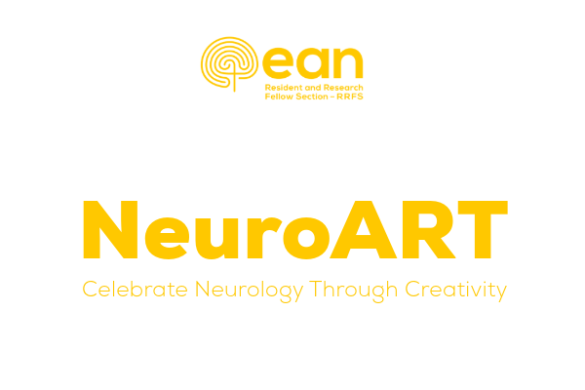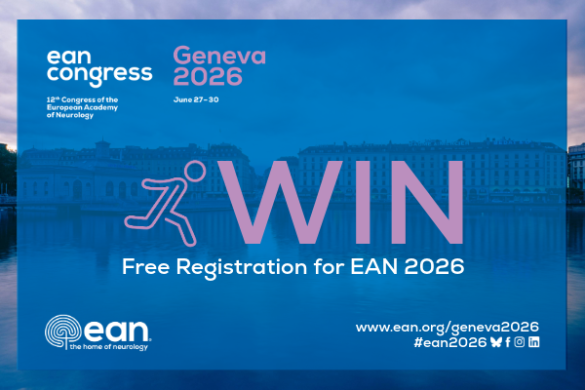On Sunday, June 20, the Presidential Symposium brought together four top speakers from the world of neurology, all of whom were invited to deliver named lectures. This invitiation is the highest honour bestowed by the European Academy of Neurology, reserved for outstanding active basic and clinical scientists. The lectures are named after three outstanding European neurologists and awardees are selected by the EAN.
The Symposium, chaired by EAN President Claudio Bassetti and co-presented by Thomas Berger, chair of the EAN Scientific Committee, began with a short introduction by Basetti, offering a warm welcome to this year’s chosen speakers, and referring to the Presidential Symposium as one of the traditional highlights of the EAN congress. Berger then introduced the first speaker, Gábor Halmágyi from Sydney, Australia, to give the Moritz Romberg Lecture.
Under the title ‘Romberg and his famous test – what more do we know 170 years later’, Halmágyi reviewed the psychological basis of modern vestibular function tests in the context of the Romberg test. Romberg, a founder of modern clinical neurology, is now remembered mostly for his postural test in which patients with proprioceptive impairment are unable to stand with their feet together when their eyes are shut. Romberg, however, was active before the function of the vestibular system was elucidated and Halmágyi showed a video example of how vestibular impairment, moderate bilateral or severe unilateral vestibular impairment will also produce a positive Romberg test, but only if proprioception is disrupted as happens when the patient tries to stand on a compliant rather than on a firm surface.
Halmágyi gave a detailed examination of how it is now possible to routinely test the function of each of the 6 semicircular canals and the 4 otoliths, individually. In particular, with the use of head impulse tests, which demonstrate a large lag in compensatory eye movement in cases of vestibulo-ocular impairment, showing a saccadic response rather than a vestibulo-ocular reflex.
Next on the schedule was ‘The Brain Prize Lecture’, delivered by Huda Zoghbi, from Houston, United States. Zogbhi received the Lundbeck Foundation’s coveted Brain Prize in 2020 for her pioneering work in Rett Syndrome, which includes identifying the genetic mutation that causes it. Her lecture, ‘Rett syndrome from the clinic to genomes, epigenomes and neural circuits’ provided a comprehensive look at the current state of play in Rett research.
After an explanation of Rett and its typical characteristics, Zoghbi went on to give a brief outline of the milestones in the progress of understanding the syndrome, including her own identification of the gene that bears the mutation responsible for Rett. The main substance of Zoghbi’s lecture focused on the research stemming from that point, including the realisation of the full phenotypic spectrum of various mutations and the positive effects of pre-symptomatic training on limiting impairments of Rett mice. Training studies show that pre-symptomatic training improves motor and memory deficits in mice with Rett syndrome (albeit in a task-specific manner) and improves morphology and synaptic function of task-specific neurons. She also showed that continued training delays the onset of phenotypes. Zoghbi believes this research has clear clinical implications and clinical trials must be undertaken, as there is a window of opportunity for early training to delay onset in Rett patients.
In the third talk of the symposium, Jean-Claude Baron from Paris, France, took on the Charles Edouard Brown-Sequard Lecture. Baron’s talk, ‘the core/penumbra model: implications for acute stroke treatment and patient selection’ explored the value of considering individual physiology as well as time since onset in cases of ischemic stroke. Despite major advances in prevention, ischaemic stroke remains among the leading causes of death and disability worldwide. Baron discussed the revolution in the management of acute stroke patients that has occurred since the discovery of the ischemic penumbra in humans; an area of brain tissue that is electrically silent and at-risk of infarction after occlusion of the middle-cerebral artery, which can be salvaged by reperfusion up to and sometimes beyond 24 hours after stroke onset.
His talk addressed how the time-course of core growth at the expense of the penumbra widely differs from patient to patient, and that individual physiology should be considered in addition to time since stroke onset for decision-making. He noted that this concept has been implemented to optimise patient selection using CT or MRI in pivotal trials of reperfusion therapies beyond 3 hours after stroke onset, and is now routinely applied in clinical practice. The notion that to be both efficient and harmless, treatment should be tailored to each patient’s physiological characteristics represents a radical move towards precision medicine for stroke treatment.
Finally, Adriano Aguzzi from Zurich, Switzerland, closed out the Presidential Symposium with the Camillo Golgi Lecture, about the ‘History of Prion Science’. Aguzzi explained that transmissible spongiform encephalopathies (TSEs) are neurodegenerative diseases of humans and many animal species caused by prions, the main constituent of which is PrPSc, an aggregated moiety of the host-derived membrane glycolipoprotein PrPC. Prions have been found to encipher many phenotypic, genetically stable TSE variants, the latter of which Aguzzi said is very surprising, since PrPC is encoded by the host genome and all prion strains share the same amino acid sequence. Aguzzi reviewed what is known about the infectivity, neurotoxicity, and neuroinvasiveness of prions, explaining why he regards the prion strain question a fascinating challenge – with implications that go well beyond prion science. He reported results obtained in his laboratory, which is attempting to address the strain question, as well as some other basic issues of prion biology, with a ‘systems’ approach, using organic chemistry, photophysics, proteomics, and mouse transgenesis.











